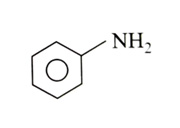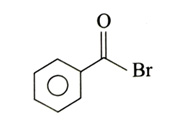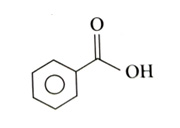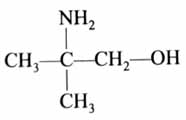Topic Question Set
Q 1
:
In the Claisen-Schmidt reaction to prepare 351 g of dibenzalacetone using 87 g of acetone, the amount of benzaldehyde required is _______ g. (Nearest integer) [2024]
(318)
The condensation of an aromatic aldehyde (without hydrogen) with an aliphatic aldehyde or ketone (having hydrogen) in the presence of a strong base (hydroxide or alkoxide) to give , unsaturated aldehydes or ketones is called Claisen-Schmidt condensation reaction.
By stoichiometry of reaction, moles of benzaldehyde = 2 moles of dibenzalacetone = 2 1.5 = 3mol.
Mass of benzaldehyde = moles of benzaldehyde molar mass of benzaldehyde = 3mol 106 = 318 g
Q 2
:
The final product A, formed in the following multistep reaction sequence is: [2024]


(2)

Q 3
:
The product of the following reaction is P. [2024]
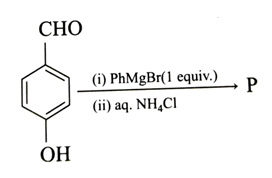
The number of hydroxyl groups present in the product P is ______.

(0)
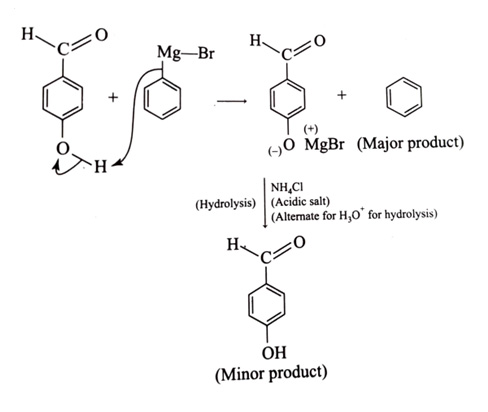
Q 4
:
Major product B of the following reaction has ___________ -bond. [2024]


(5)
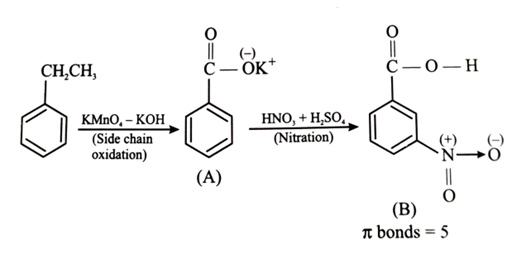
Q 5
:
'P' is [2025]
(2)
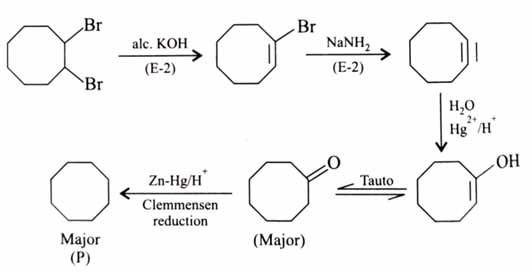
Q 6
:
An organic compound (X) with molecular formula is not readily oxidised. On reduction it gives (Y) which reacts with HBr to give a bromide (Z) which is converted to Grignard reagent. This Grignard reagent on reaction with (X) followed by hydrolysis gives 2,3-dimethylbutan-2-ol.
Compounds (X), (Y) and (Z) respectively are: [2025]
(2)
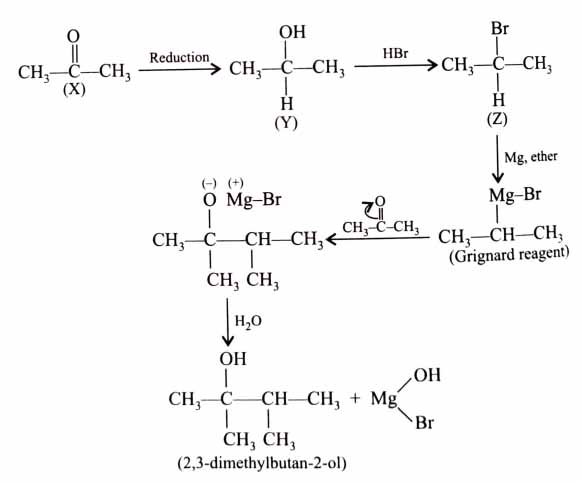
Q 7
:
Consider the following reactions. From these reactions which reaction will give carboxylic acid as a major product?
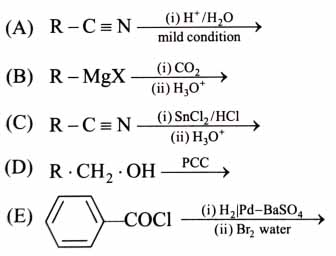
Choose the correct answer from the options given below: [2025]

A and D only
A, B and E only
B, C and E only
B and E only
(4)
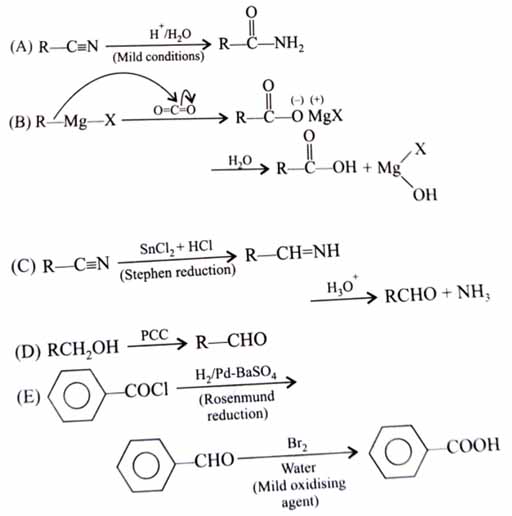
Q 8
:
An optically active alkyl halide [A] reacts with hot KOH dissolved in ethanol and forms alkene [B] as major product which reacts with bromine to give dibromide [C]. The compound [C] is converted into a gas [D] upon reacting with alcoholic . During hydration 18 gram of water is added to 1 mole of gas [D] on warming with mercuric sulphate and dilute acid at 333 K to form compound [E].
The IUPAC name of compound [E] is: [2025]
But-2-yne
Butan-2-ol
Butan-2-one
Butan-1-al
(3)
Out of four possible isomers of , only one is optically active, so this gives us structure of [A].

Q 9
:
The product (A) formed in the following reaction sequence is
[2025]
(3)
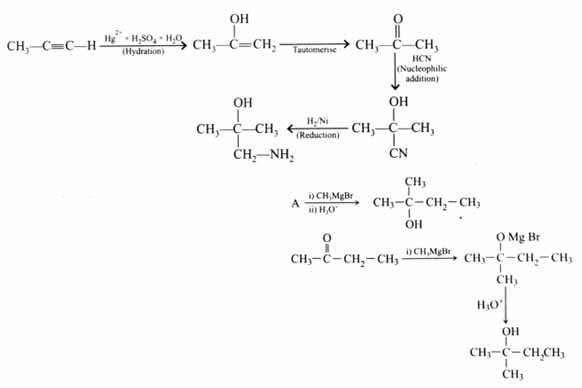
Q 10
:
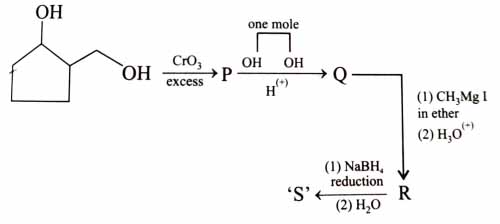
0.1 mole of compound ‘S’ will weigh _____ g.
(Given molar mass in g C : 12, H : 1, O : 16) [2025]

(13)
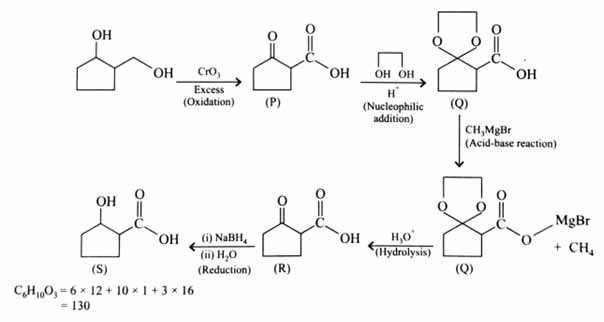
Mass of 0.1 mol S = 0.1 × molar mass of S = 0.1 × 130 g = 13 g

